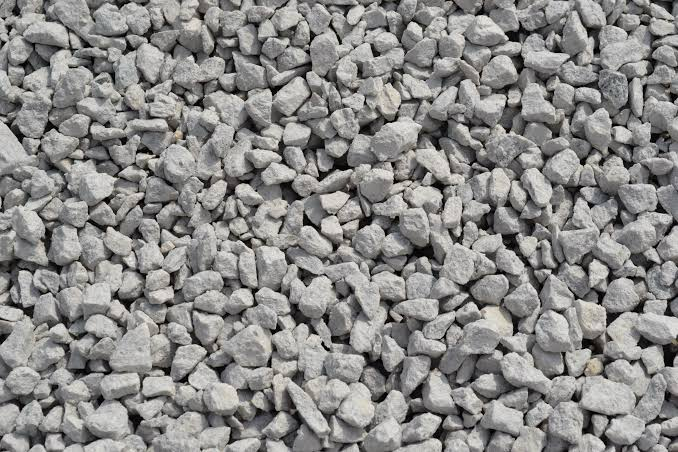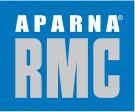3 Things You Should Know About Aggregates in RMC

February 14, 2024
In a concrete mix, aggregates play a significant role in defining its properties and overall performance. Constituting a substantial portion of Ready-Mix Concrete (RMC), aggregates typically make up 60 per cent to 80 per cent of its volume and 70 per cent to 85 per cent of its weight. These aggregates are broadly classified into two types: coarse and fine, serving as inert fillers within the concrete mixture.
Traditionally, coarse and fine aggregates, including materials like sand, gravel, and crushed stone, have been fundamental components in concrete production. They provide bulk, stability, and mechanical properties to the mix. Additionally, advancements in construction materials have introduced special aggregates with enhanced features and exceptional strength, further diversifying options for concrete formulations.
Understanding aggregates is crucial for selecting the right mix for various construction projects. Factors such as aggregate type, size, and gradation significantly influence concrete properties. By considering these aspects, engineers and contractors can tailor concrete mixes to meet specific project requirements for achieving optimal performance and durability in diverse applications.
Types of aggregates
Concrete mix relies on various types of aggregates, each with distinct characteristics that influence the final product. Coarse aggregates, typically larger than 5mm, include gravel, slag and crushed rock. These contribute significantly to the concrete’s volume and strength. Fine aggregates, smaller than 5mm like natural and manufactured sand, fill voids and enhance workability, the ease of mixing and placing the concrete. Aggregates may be natural, manufactured or recycled. Additionally, advancements in construction materials have also introduced special aggregates that offer enhanced features and exceptional strength.
What is the use of special aggregates in concrete?
Special aggregates play a crucial role in enhancing the performance of concrete in various ways. One common type is recycled aggregates, which are made from crushed concrete or demolition materials. According to the World Business Council for Sustainable Development’s 2022 report, using recycled aggregates in construction can slash greenhouse gas emissions by up to 70% compared to virgin materials.
Another type is lightweight aggregates, crafted from materials like pumice or expanded clay. They help to lighten the weight of concrete, making it suitable for applications such as precast panels and roof decks. Additionally, high-strength aggregates, derived from materials like granite or basalt, bolster the concrete’s strength, vital for structures like high-rise buildings and bridges.
Fiber-reinforced aggregates, including steel fibers or polypropylene fibers, are used to enhance concrete’s tensile strength and toughness, reducing the risk of cracking. Lastly, self-compacting aggregates improve concrete flowability, making it easier to place and finish.
Key Roles of Aggregates in RMC:
Aggregates play a crucial role in ready mix concrete, contributing to various aspects beyond just being fillers. Here are some of their key benefits:
1. Volume and Cost Reduction:
As aggregates typically occupy a substantial portion of concrete volume and weight, ranging from 60 per cent to 80 per cent and 70 per cent to 85 per cent, respectively, they significantly reduce the need for costly cement. This reduction in cement dependency leads to cost savings for construction projects.
Moreover, the availability of various aggregate types offers economical alternatives for concrete production. Utilizing recycled aggregates sourced from crushed concrete or demolition materials presents a sustainable option that not only lowers expenses but also reduces environmental impact. Furthermore, careful selection of aggregates based on size and gradation can lead to bulk optimization in concrete mixtures. By minimizing voids through appropriate aggregate sizing, the amount of cement paste required to fill these voids is reduced, resulting in further material usage efficiency and cost optimization.
2. Strength and Durability:
Coarse aggregates play a crucial role in bolstering concrete’s compressive strength, forming an internal framework that can withstand significant loads, making it indispensable for load-bearing elements like columns, beams, and foundations. Adding well-graded aggregates can boost concrete’s compressive strength by up to 300% compared to just using cement paste. (Source: American Concrete Institute (ACI) 318-19, “Building Code Requirements for Structural Concrete”)
Meanwhile, fine aggregates contribute to concrete’s tensile strength by distributing stresses more evenly, minimizing the risk of cracking due to factors like shrinkage, temperature changes, or external pressures.
In terms of durability, concrete’s resistance to cracking, wear, and environmental factors is greatly influenced by its aggregate content. Enhanced tensile strength and robust bonding reduce the chances of cracks. Furthermore, certain aggregates with high hardness and abrasion resistance, such as granite or basalt, contribute to concrete’s wear resistance, making it suitable for high-traffic areas like pavements and floors.
3. Workability and Finish:
Aggregates in concrete profoundly influence both workability and finish, crucial aspects of construction efficiency and product quality. Regarding workability, the size, shape, and texture of aggregates play pivotal roles. Rounded, smooth aggregates typically need less water for mixing and exhibit lower internal friction, enhancing workability by up to 15% compared to poorly graded mixes. Conversely, rougher textures can improve cohesion and deter segregation. Recent studies, such as a 2022 analysis in Construction and Building Materials, have shown that integrating spherical recycled aggregates can enhance workability by 10 per cent due to reduced surface area and friction.
When it comes to finish, aggregate size and texture directly shape the final surface texture of concrete. Smaller, smoother aggregates contribute to a polished finish, while larger, textured aggregates yield a rougher appearance. Proper gradation, ensuring a mix of different aggregate sizes, is essential to prevent voids and achieve a uniform finish.
4. Dimensional Stability and Shrinkage Control:
Aggregates play a vital role in managing concrete’s dimensional stability and reducing shrinkage, which helps prevent cracks and ensures long-lasting performance. By acting as fillers, aggregates decrease the need for excess water in the concrete mix. Additionally, larger aggregates physically restrain the shrinkage of the cement paste, further reducing dimensional changes. Moreover, aggregates help control thermal expansion by counteracting the higher expansion of cement, maintaining concrete’s overall dimensional stability, especially when exposed to temperature variations.
5. Thermal and Acoustic Properties:
Aggregates also offer surprising versatility in shaping concrete’s performance beyond strength and durability. By carefully selecting type and proportion, they can significantly impact thermal and acoustic properties, expanding concrete’s applicability.
Lightweight aggregates like pumice or recycled glass create lightweight concrete with excellent thermal insulation, reducing energy consumption in buildings. Specific aggregates offer additional functionalities: expanded perlite for superior insulation and basalt for high-temperature resistance. Similarly, porous aggregates like pumice or recycled rubber enhance sound absorption, making concrete suitable for noise reduction in applications like auditoriums and soundproof walls.
Why Choose Aparna RMC for the Right Mix for Your Projects?
Aparna RMC is known for consistent quality and timely delivery with a strong, customizable, versatile, and durable concrete mix with the right choices of aggregates for specific requirements. Backed by our technological expertise and sophisticated R&D capabilities, the ready-mix concrete has innovative solutions designed to provide superior mechanical performance to meet your stringent and unique demands. The high-quality, cost-effective products are designed to offer consistency, reliability, and durability. Our product range comprises varied mixes, including specialist ones for specific applications. The mixtures exhibit best-in class properties and comply with regulatory standards nationwide.
